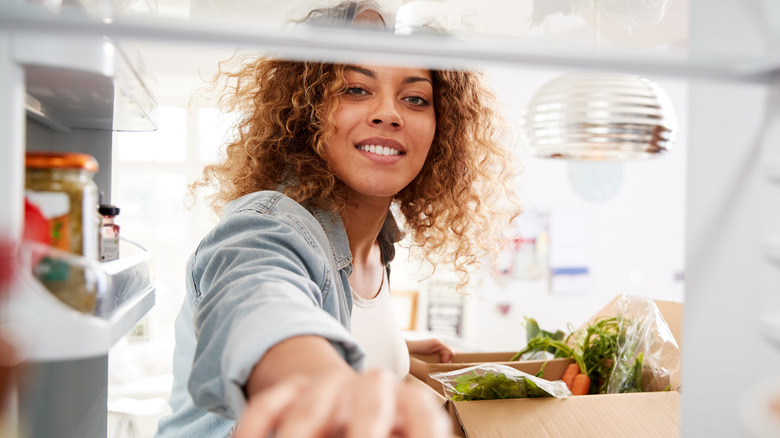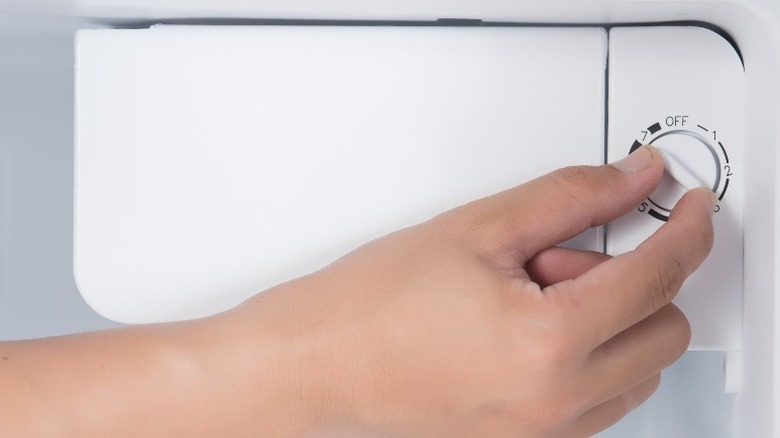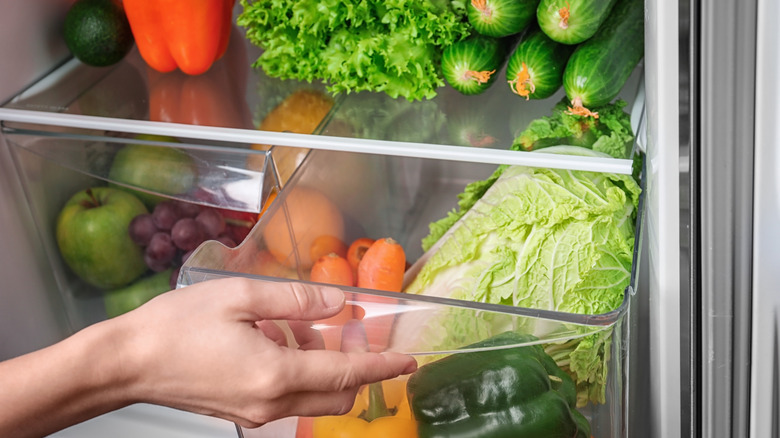What Is The Correct Temperature For Your Refrigerator?
Did you open your refrigerator to what seems to be a too-high temperature? It can happen for many reasons, even as simple as someone unplugging it. Yet, it's critical to keep some types of foods cold to prevent the development of bacteria and other microorganisms. According to the U.S. Food and Drug Administration (FDA), salmonella, E. coli O157:H7, and C. botulinum are organisms that may cause illness that could develop in food if the food's not kept properly cool.
It's a good idea to either refrigerate or freeze foods, based on when you plan to use them, within two hours of those items being at room temperature. Not all food needs to be in the refrigerator, but perishable foods like meat, eggs, seafood, and dairy products cannot remain out of the ideal temperature range for very long. The question is, how cold should your refrigerator be? Here's what you need to know about optimal temperature ranges for the fridge.
The proper temperature matters
Getting the internal area of your refrigerator at the right temperature takes a bit of balancing. If it's too hot, your food is at risk of spoiling and making you ill. If it's too cold, it may freeze food that should not be frozen. The FDA states that you should keep your refrigerator below 40 degrees Fahrenheit. Since 32 F is the point at which water freezes, you'll want to keep it above that level as well.
How do you know what the current temperature is? Purchase a simple appliance thermostat to do so. You can place it in the refrigerator, close the door, and wait a while to determine what the internal temperature is. If you're not reading in the proper range, you'll need to determine what steps are necessary for adjusting the refrigerator's temperature. The FDA recommends purchasing a thermostat for each fridge you have and leaving it in it. Don't forget the freezer, too!
Consider humidity levels as well
Your refrigerator isn't just designed to meet a specific temperature; in many cases, it also can help with humidity factors. Many fridges have two drawer compartments for placing produce, either those that need high humidity or those that need low, based on the settings used. According to The Home Depot, you should use a low humidity setting for items like pears, apples, kiwis, avocados, and papayas, as these are likely to expel a higher amount of ethylene gas and won't lose their moisture.
In the high-humidity drawer, place items like leafy greens, herbs, cabbage, berries, green beans, and peas, as these are more sensitive to ethylene gas exposure. By keeping them separate, they could last longer. This drawer has a seal that helps to keep moisture within that space, as these types of produce are most likely to dry out or wilt otherwise. Balancing humidity and temperature may help to create long-lasting food that's healthy for you and your family. Considering this, it may be time to organize your fridge.


